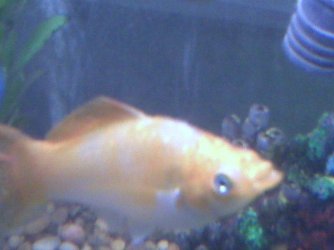swaddell13
New Member
So i've had 2 mollies now that have had this problem: white spot, almost like my fish iis butting its head on something but typically end up dead after a week or so. So my last molly i had since it was a baby had 5 babies. a day later the white spot on the head, and then the next day dead. now, this female creamcicle molly ive had in the tank for a while now has the white spot as well. Shes had it for 2 days now and its starting to get puffy, ive tried reading topics on it already but most of the time they end up dying before anyone can really diagnos it. please help! picture attached
sorry pic is blurry and note that the body isnt white spotted like the photo shows, and ive added Copper Safe to the tank for ich and velvet etc...
please help! thanks!
Scott in AZ
edit: heres a clearer pic:

sorry pic is blurry and note that the body isnt white spotted like the photo shows, and ive added Copper Safe to the tank for ich and velvet etc...
please help! thanks!
Scott in AZ
edit: heres a clearer pic:




 /www.aquatic-hobbyist.com/profiles/d...columnaris.html
/www.aquatic-hobbyist.com/profiles/d...columnaris.html